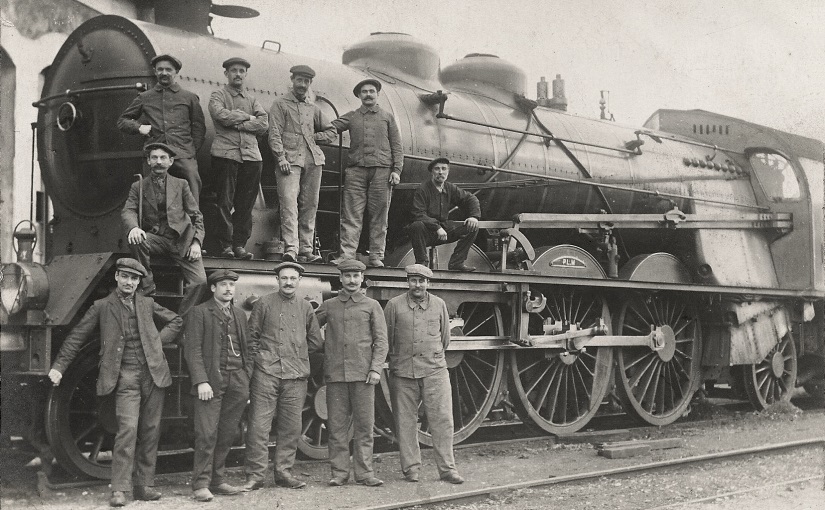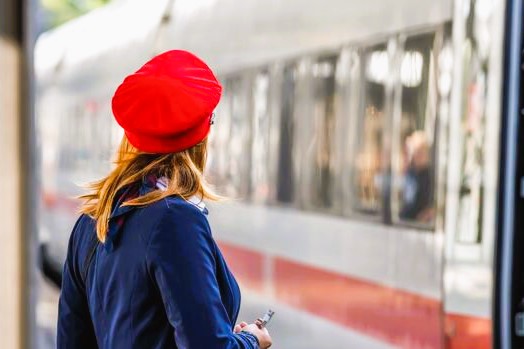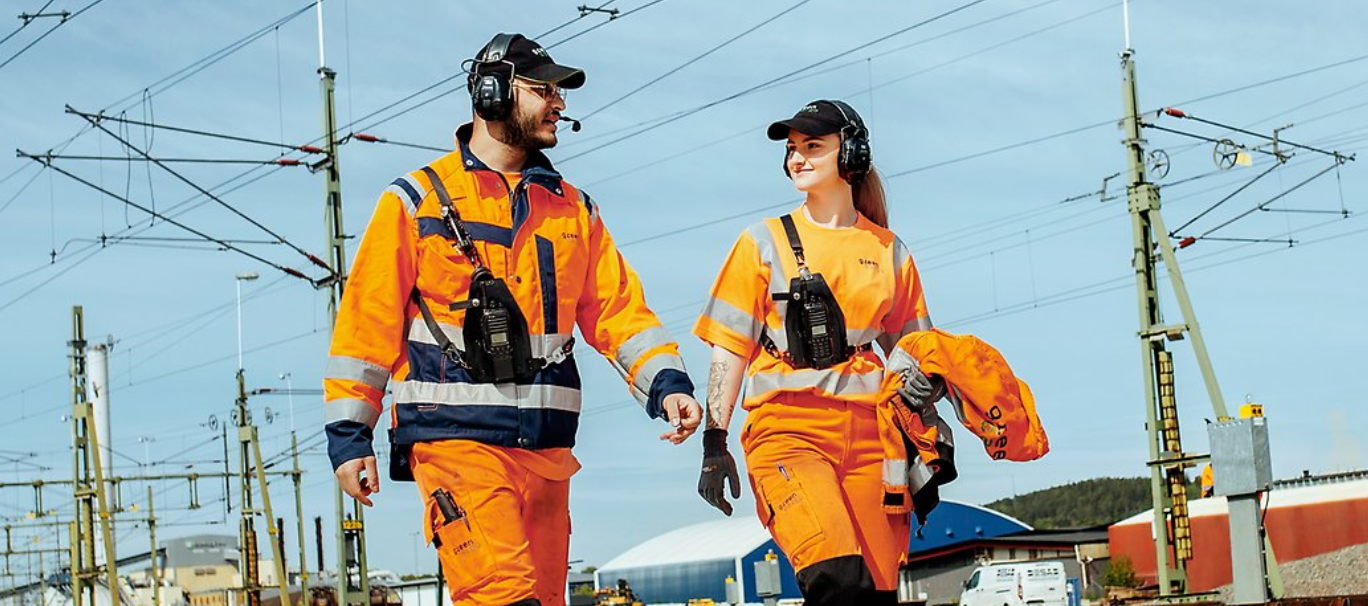The employees who make our trains run • Railway workers
Note: For educational purpose only. This page is meant purely as a documentation tool and has no legal effect. It is not a substitute for the official page of the operating company, manufacturer or official institutions. It cannot be used for staff training, which is the responsibility of approved institutions and companies.
The origins
The train created links, it structured a territory; it created a unified network of previously independent lines. Above all, the train has united a professional community, from different professions – workers, technicians and engineers – around strong values: the railwaymen. Building railroads required a large, mobile workforce, often comprising laborers known as “navvies” (short for “navigators”). The men of the infrastructure in fact ‘walk’ along the track, but to maintain the tool, not to look for work. These were primarily men who undertook heavy manual labor, such as digging tunnels, building embankments, and laying tracks.
Sociology
The profession of railway worker is of great interest to researchers and authors specialising in the concept of collective action. The social sciences in particular have produced an abundant bibliography, but this is too often confined to the study of social movements or the construction of an identity through strikes. Some authors focus on the close relationship between technical progress, social morphology and trade union action. This reading would suggest that the railway worker is inseparable from trade unionism and mass protest. The answer, however, is more nuanced than one might suppose…

A marked working-class origin – Until recently, being a railway worker meant belonging to a class of workers worthy of respect. The railway worker is also part of the rail, coal and steel triptych, which covers everything that ‘made’ the industrial revolution in the 19th century. Railwaymen, miners and metalworkers are part of the archetypal representation of the working class, with its pronounced and assumed virility. This gave rise to a whole imaginary world of collective representations, sometimes romanticised, as in the works of Charles Dickens, Emile Zola or Friedrich Engels. The writers also highlighted the other side of the railway worker, making the picture rather harsher by depicting an impoverished, alcoholic and very masculine environment, an image that de facto associates the railway worker with the proletariat and that is still prevalent today in certain trade union and political thought patterns, mainly on the left of the political spectrum.


The inclusion of railway workers in the world of work led them almost naturally to Marxist theories, which were very much in vogue in the first half of the twentieth century, and for which the workers’ movement “had to fight relentlessly for the end of its alienation”. Railway workers were therefore heavily involved in all the major social events, particularly the 1917 revolution in Russia. Their position as basic producers, both in industry and in passenger transport, gave them an undeniable balance of power over the elite, which benefited trade unionism and the political struggle. These theories of class struggle via the railways are still present today, but to very different degrees in different countries, with France the undisputed leader in this field. This is why French sociology and academia take such an interest in it, as we have already seen. These days, however, working-class membership is no longer asserted as it once was. The shape of the working world has changed radically, with rising living standards for all, precisely as a result of the many struggles of the past. As a result, today’s young railway workers no longer live in the misery of yesteryear and no longer necessarily have the political ideas of their grandparents.
Diverse professions, very different experiences – Working for the railways does not mean being a de facto factory worker. Qualified engineers and technicians have always been responsible for the design and operation of the entire railway system. Numerically, there are inevitably fewer managers than operatives. According to the SNCF’s 2010 social balance sheet, 53% of its employees were operatives, 29% were supervisors and 18% were managers. We also need to distinguish between administration, which is essentially sedentary and has fixed working hours, and operations, which is a tough nomadic job 24 hours a day, 365 days a year, including weekends.
Mechanics, workshop workers and trainmen have never ceased to express their particular characteristics, both in the workplace and in union action. A wide variety of professions coexist within this operation. A very clear distinction is made between ‘infra’ people and ‘rolling stock’, the most nomadic category, those who get on board. There is no doubt that drivers hold a special place among train crews: they are the pillars of rail production, since they are responsible for the proper implementation – or otherwise – of train services. Like airline pilots, drivers are in the minority in terms of numbers, but they form a strong, ‘separate’ guild, with their own union (FGAAC in France, SACT in Belgium, GDL in Germany, etc.), their own website, their own social networks and their own union.
Infrastructure staff are also very diverse. The track brigades are the most ‘basic’ in terms of qualifications and are not very highly regarded, while the signalling and power supply (catenary) brigades have more highly qualified staff due to the technical nature of these sectors. In the administration, there are many technicians and other engineers responsible for coordinating maintenance and works. Then there are the signal box staff, who are just as essential, because without opening routes, no train can leave. Then there are the staff in marshalling yards and stations, as well as the workshop staff, who are not always well regarded.
Against this backdrop, people’s experiences are very different, depending on their job and where they live. This can be seen in trade union action, which is more prevalent in the field than in administrations, qualified staff and management. At the SNCF there is a federation of unions for engineers, managers, technicians and supervisors working on the railways and related activities, which has become UNSA Cheminot. In Germany and Great Britain there are drivers’ unions, such as the EVG and Transport Salaried Staffs’ Association (TSSA).
The common good and its differentiated social system
In many European countries, there is considerable diversity in the definition of public service: terms used, doctrines and concepts, competent territorial levels (local/regional/national), whether certain services are commercial or not, and the types of players involved (public/mixed/private/associative). In the French tradition, the term “public service” is often confused with public service missions, monopolies, public companies, personnel status and, finally, the role of the State.
What’s the railway worker got to do with it? Between 1902 and 1947, there was a wave of nationalizations of all European railway companies, without exception. It began with the creation of SBB (Switzerland, 1902), followed by FS (Italy, 1905), SNCB (Belgium, 1926), SNCF (France, 1938) and ended with British Railways in 1947. In all cases, state control rapidly created the status of commissioned employees, in other words, “agents made available” by the public company, to be placed wherever deemed necessary. In theory, this means that the agent never chooses where to work, and that integration into a railway sector is based on a professional aptitude test deemed fair and accessible to any citizen. Those who pass the exam(s) are “appointed” to a particular position, and have no control over their salary, which is strictly governed by the public company’s general pay scale. The author of these lines personally knew an agent stationed in Namur, but “temporarily” seconded to Brussels. This lasted…for over 30 years!
This way of managing “the human thing”, typical of the statist approach, was offset by the creation of certain social benefits. For example, the problem of the workplace was once solved by the creation of railway towns close to the depots, like the corons close to the mine shafts. Other social benefits were superimposed, such as a system of health care, mortgages and specific social guarantees, outside the scope of ordinary law. At SNCF, the benefits accumulated over time have resulted in what Georges Ribeill calls “a singular hybrid system”. In addition to the above-mentioned social protection, the two key features of this social legislation are most certainly the guarantee of lifetime employment (except in the case of serious misconduct) and the benefit of an above-average pension, justified by “service to the nation”. For all that, and to varying degrees from country to country, railway workers are not strictly speaking agents of the State, nor do they have regalian powers.
Lifetime employment, the subject of much debate in the private sector, had – and still has – a practical justification: to retain these particular professions and prevent people from “going elsewhere”. Training is expensive, and skilled labor is not always available when needed. The railroads have their own specific professions (drivers, signalmen, traction, electricity), but also a host of less “railway” professions. This is the case for welders, factage personnel, “editors”, accountants, secretaries and kitchen staff. In the interests of fairness and entrepreneurship, we have avoided separating the “real railway jobs” from the “common” ones. Just look at the current dilemma with cleaning services, an unrewarding job deemed “not railway-specific”.
Social changes


The early ’80s marked the end of the socialist vision of the State and its lasting replacement by a differentiated vision, definitively turning its back on the The Post-War Boom and Keynes’ theories. This meant giving greater autonomy to public institutions: the State provided the legislative and financial framework, while public companies implemented their own projects, each in their own way. From the 90s to 2010, the majority of railroad companies were given the status of autonomous enterprises, separated in accounting terms from their infrastructure or divided into business units or branches, all under the cover of a holding company or equivalent legal formula (DBAG, ÖBB, etc.).
The public is changing too: the promotion of individualism and edonism is taking root in the public consciousness. The result is a shift from the public service user to the customer, which changes everything in terms of railway company strategy. One example is the evolution of pricing. It now requires the contribution of staff from business schools, an “unknown” in the world of administration, accustomed to “subjecting” citizens rather than responding to their demands. For example, within the same railway company, there is a clear distinction between “operations” staff, who organize their services around the “user” (to be subjected), and “sales” staff, who focus on the “customer” (to be cherished…). The diversification of “user/customer” needs and demands is leading to new requirements in terms of service, quality and satisfaction of the diversity of their needs and aspirations. The principle of equality is not synonymous with uniformity, but with a tailor-made response to differentiated needs. It’s not really public service as it used to be…
The impact of these changes on railway workers is considerable. While, in theory, the user has an obligation to respect the State, this is no longer the case with the customer, who has become king because the customer is always right. The commercial world is not really part of railway culture. There is still a famous misunderstanding between railway workers and passengers. The former remain convinced that they work in an industry that serves the State. The latter are now demanding the best service at the best price, which is something quite different. Yet the current discourse persists in explaining to them that it is for their own good and safety that they will have to continue to pay more and suffer the inconvenience of strikes without being able to turn to another operator. Low-cost and other car-sharing services have demonstrated the big difference between public service and commercial service. Maximum dilemma…
Rail workers’ status in Europe
Rail workers’ status in Europe varies significantly across countries due to differences in labor laws and the extent of privatization in the railway sector.
- France: Rail workers for SNCF (the national railway company) traditionally enjoyed a status comparable to civil servants, including job security and pension benefits. However, reforms since 2020 phased out this status for new hires, aligning their contracts with private-sector norms.
- Germany: Employees of Deutsche Bahn, Germany’s state-owned railway, do not have civil servant status. Instead, they work under collective agreements that ensure competitive wages and benefits.
- Italy and Spain: Workers in state-run railway companies generally have strong job protections and benefits due to union agreements, but they are not considered civil servants.
- Switzerland: SBB’s railway staff have not had civil servant status since 2000. They are employed by SBB, but under a special employment law that offers certain advantages, such as strong protection against dismissal and attractive social benefits.
- United Kingdom: The railway system is mostly privatized, and workers do not have civil servant status. Terms of employment depend on individual companies.
While some countries maintain robust protections for rail workers, the trend is toward standardizing employment conditions with private-sector norms.


In Great Britain, all railway employees are employed on private contracts following privatisation and franchising, which has been in force since 1996. In Germany, the major railway reform of 1994 created the BundesEisenbahnVermögen (BEV). All railway workers who had civil servant status kept it. However, since 1994, staff recruited by DB AG are no longer civil servants and are paid a lower salary (10% in 1994) than their predecessors. The BEV pays civil servants in accordance with the civil service salary scale, but the DB reimburses the BEV only on the basis of the lower salary scale defined in the DB collective agreement. The provision of civil servants is at a loss for the BEV: in 2006, the DB paid around 1.6 billion euros for the civil servants made available to it, out of a total cost of 6 billion euros (remuneration of civil servants made available to the DB and pension costs), with the State covering the difference (which can be likened to aid).
Until 2000 in Switzerland, railway workers, like postmen and most federal and cantonal civil servants, were appointed by decision of an authority with reference to a legal framework. The working conditions of civil servants were therefore decided in parliament, which left no room for debate. When the status of civil servant was abolished in 2000, a major partnership was established between the social partners and SBB. This led to successive increases in working hours, culminating in a 41-hour week in January 2015.
Tomorrow
The changing railway landscape is accompanied not only by the appearance on the networks of private companies, but also of transnational entities under private law. This has been the case with Eurostar since 2010 and Thalys since March 2015. Even if their shareholding remains within the public companies, these entities can now decide on their own social and recruitment policies, without having to draw on public-sector staff made available on a voluntary basis by their shareholders. The public companies themselves have created their own subsidiaries, such as Keolis (SNCF), Arriva (DBAG), Thello (Trenitalia) or Abellio (NS). These public transport multinationals win X number of years of operating contracts and operate trains and buses in many countries with the social criteria of those countries.
Beyond that, it’s almost certain that networks with a long-standing specific status will see that status change over time. In Belgium, SNCB and Infrabel are beginning to talk about hiring under private contract. Debate is also raging within the SNCF group over the long-awaited drafting of a branch collective agreement. The timetable for these changes, however, is uncertain and largely dependent on government action.
With modernization, social progress and new societal trends, the managerial culture is now seeking to replace the railway culture based on work experience and the values of fraternity, solidarity and public service. As we have seen, the upheaval among railway workers is profound. Their relationship with work is considered outdated, and sometimes still seen as a brake on modernity. But rail workers are still a bunch of buddies at work, for better or for worse, as in any productive sector, whatever its size. Will the train continue to “make society”?
French professor emeritus at the Sorbonne, François Caron has observed that the railwayman has become the instrument of a demonstration, the actor of a particular vision of the history and society of a given era. For some, it’s a question of demonstrating the validity of the concept of class struggle; for others, of defending the concept of public service; for still others, of extolling the virtues of certain forms of paternalism; for all, of constructing an ideologically significant image of the railway worker. Can you call yourself a “railway worker” when you work for Keolis, Eurostar or NTV-Italo, just as you do for SNCF, DBAG or SBB? Can you call yourself a “railway worker” if you’re a driver, a welder in the workshop, a draughtsman or a marketing executive? Ultimately, it’s up to each individual. 🟧

[TOP]
The employees who make our trains run • Lexical
